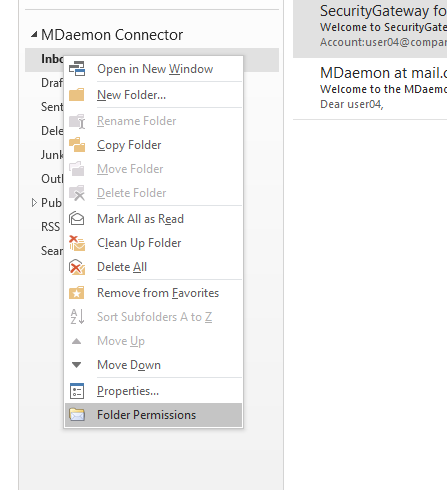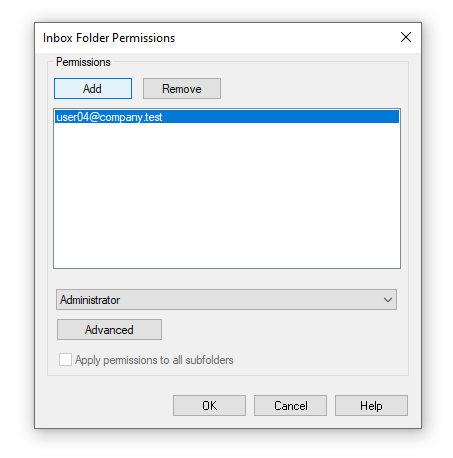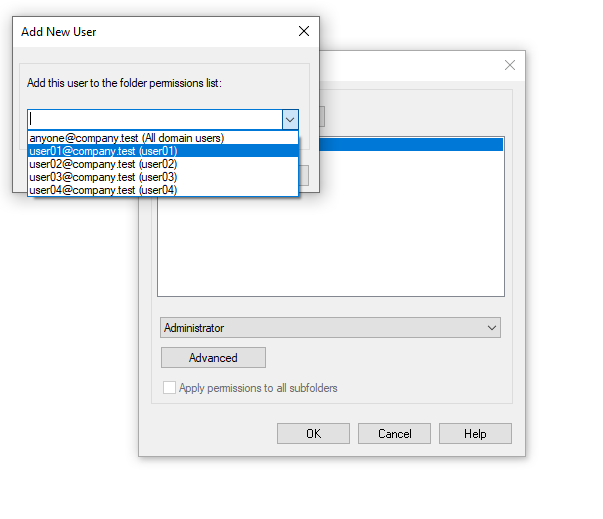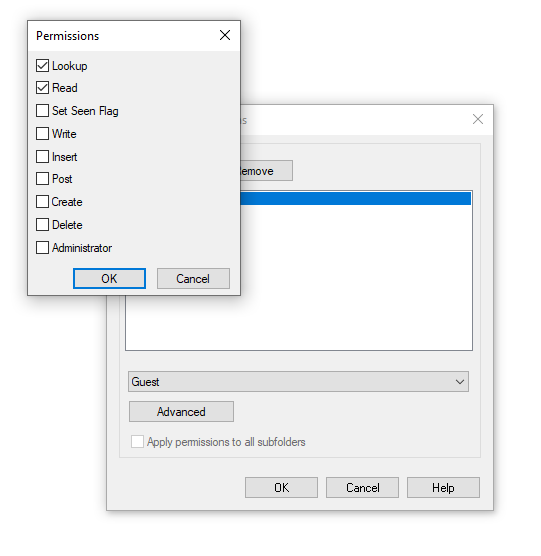How to share folders in Outlook with MDaemon Connector
With MDaemon Connector, it's easy to share your mail, contacts, calendars, and task folders with other users.
Follow the steps below to share a folder with another MDaemon user.
- Open the Outlook profile that contains the MDaemon Connector account.
- Right click on a folder you'd like to share.
- Select Folder Permissions

- Click Add on the Folder Permissions menu.

- Type or use the drop down list to select the user to add.

- Click OK
- Use the drop down list to select the level of permissions for the shared user.

- Click the Advanced button to view the permissions granted for each level.
- These permissions can be modified as desired.
- Click the Help button or review the Permission Details at the end of this article for details on each permission.
- Click OK
- (Optional) Click Apply permissions to all subfolders if you would like to apply the selected permissions to all subfolders nested below the shared folder.
- Click OK to apply the shared folder permissions.
Permission Details:
Lookup - the user can see this folder in his or her Folder List.
Read - the user is permitted to see the contents of the shared folder (i.e. see the calendars, contacts, and the like). Note: if you use the options below to grant permission to edit or otherwise affect the contents of the folder, then you must also grant Read permission in order for the person to see those contents.
Set Seen Flag - the user can change the read/unread status of messages in this folder.
Write - the user can change flags on messages in this folder.
Insert - the user can append and copy messages or items into this folder.
Post - the user can send mail directly to this folder (if the folder allows).
Create - the user can create subfolders.
Delete—the user can delete messages or items from the folder.
Administer—the user can administer the Permissions for this folder.
